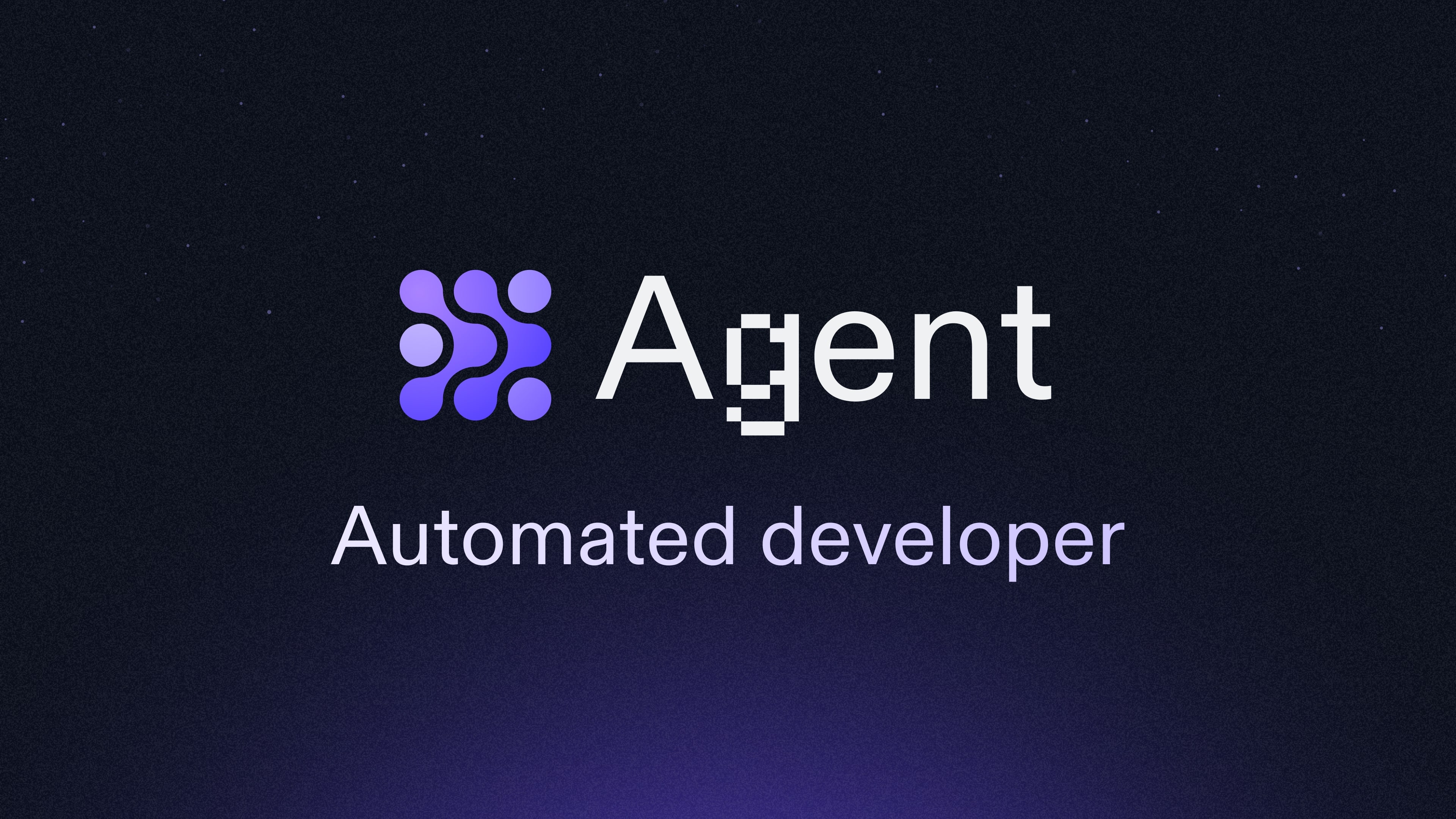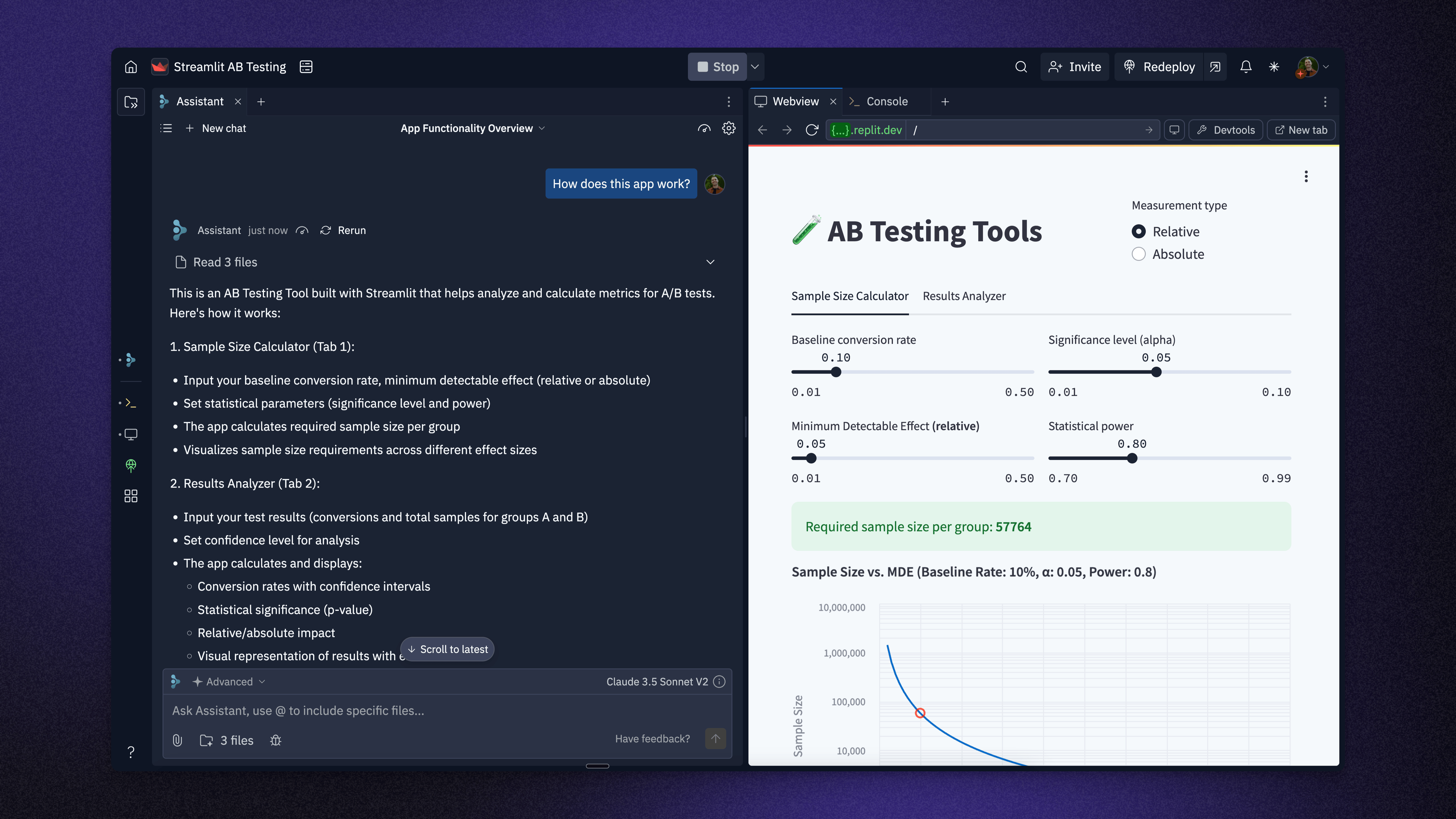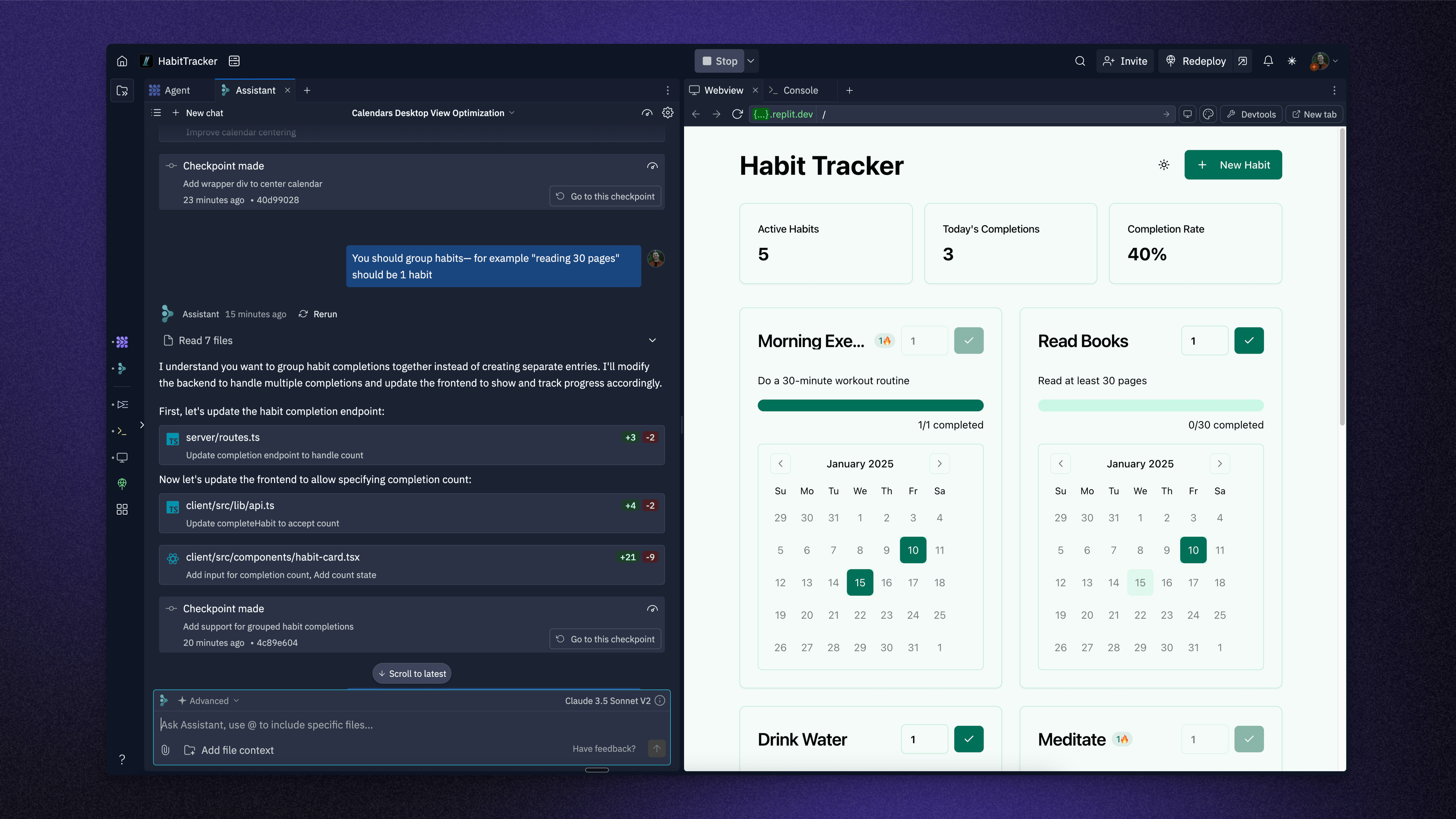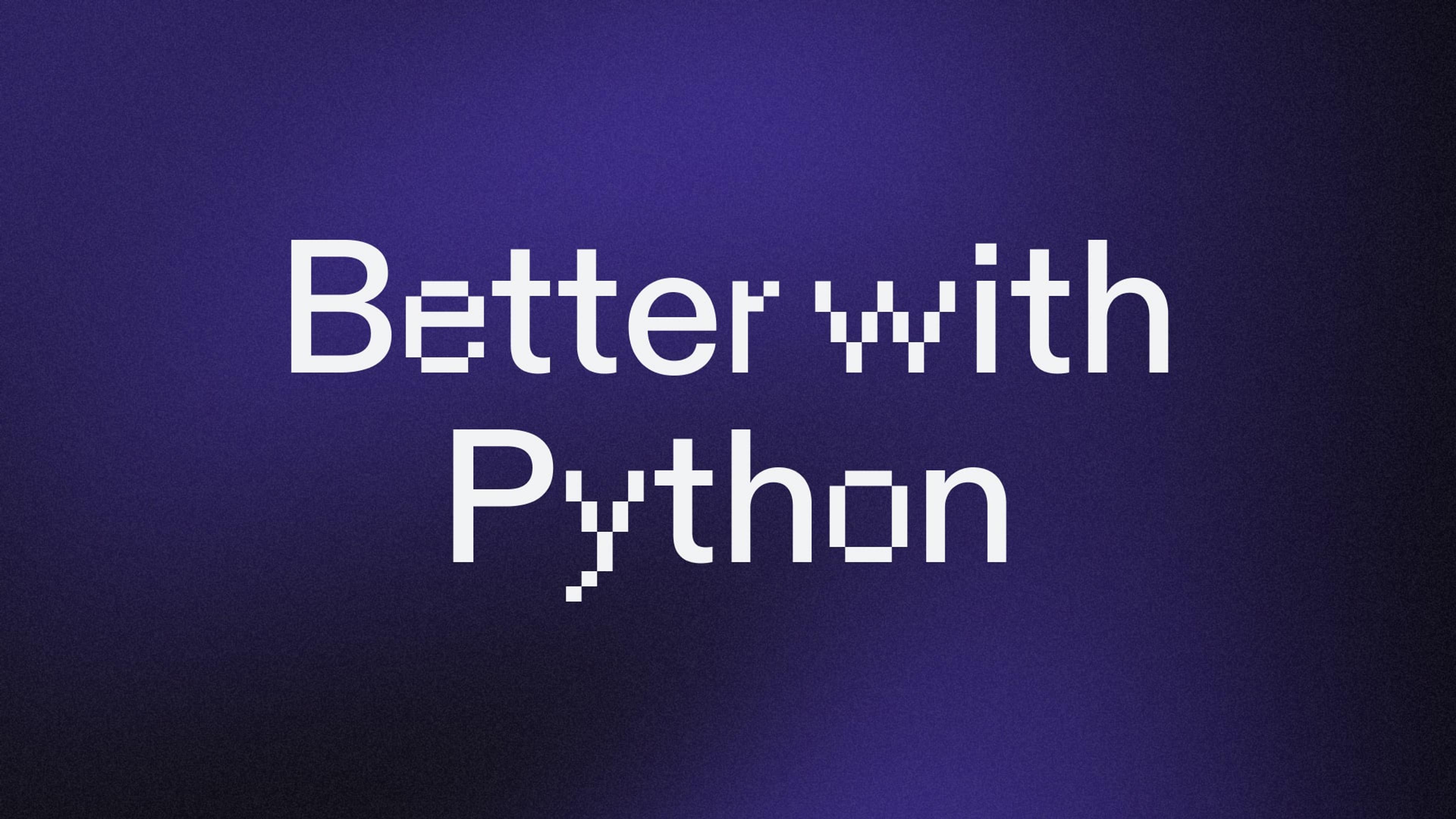"Can everyone really code with AI?"
I hear this question all the time. Usually after someone sees a viral post about an AI-built app and thinks "I could do that too!"
But here's what those posts don't tell you: most AI-generated apps are just pretty shells—nice looking websites that lack functionality.
Why? Most AI coding assistants build with JavaScript and are optimized for presenting information to the user (frontend development). These apps lack the backends and services that power functional applications.
JavaScript is great. It creates beautiful frontends—Replit’s AI tools use it well.
But Replit is unique: we don’t only use JavaScript. In fact, there are many times it’s not the right tool for the job. Perhaps you’re:
- A data analyst who lives in Python
- Someone who learned to code through Python scripts or tutorials
- Building something that needs serious backend functionality
JavaScript is complicated, the ecosystem is constantly changing (React? Next? Vite? Help!), and JS / TS backends aren’t beginner friendly.
The solution?
Build your way
Tools like Replit Agent, which gives AI systems real agency, can take an idea from concept to MVP and beyond—both JavaScript and Python.

Like many self-taught builders, I cut my teeth on Python. It's the first real programming language for many.
Python reads like English (as much as a programming language could) and offers a gentler learning curve than alternatives.
Its versatility makes it the Swiss Army knife of development—equally at home building APIs, crunching data, powering ML & AI models, or even serving dashboards (thanks, Streamlit).
Yet it's been overlooked in the age of AI. That’s likely because of how hard it is to run Python environments at scale.
Enter Replit
This is where everything changes. We're the only platform truly optimized for Python development—no installation, no configuration, just pure creation.

Think about it like buying a piece of furniture:
- Traditional development is like woodworking: complicated, a steep learning curve, built completely from scratch, and expensive.
- Replit is like heading to Ikea or CB2: simple to follow instructions, some assembly required, but great results and something you can use. Like, right now.
So if you want a chair, you can put in an order to a master woodworker for several thousand dollars and you’ll have your chair in a few months…
Or you can go assemble one yourself. Today. And get compliments at your dinner party for about 1/10th the cost.
Instead of installing Python, configuring your development setup, or paying for a course, you can open your browser and start creating.
Idea to app, without all the headaches. It works on any device (mobile included), and you can share your project with a simple url.
With Replit, you can:
- Configure your projects in
- Collaborate in real-time with multiplayer
- Access production-grade databases and
- Deploy your apps (in any language) to the internet in two
- Run scheduled jobs and background tasks or deploy websites
AI that Actually Works

Replit Agent and Assistant take this simplicity to the next level. Imagine having a senior developer sitting next to you, ready to:
- Turn your ideas into working code
- Debug issues in real-time
- Suggest improvements and optimizations
- Handle the "boring stuff" like configuration

While many platforms offer AI coding tools, Agent is the only true environment builder that can take Python projects from zero to MVP.

The Future Is Here
If you're intimidated by complex frontend code or looking to build in a more beginner-friendly language, we get it.
That's why we've optimized our AI for building with Python and JavaScript. It even knows when to select the right tool for the job.
That includes your favorite frameworks: Streamlit, React, and more.
Three years ago, I was a data analyst struggling to get simple apps deployed. Today, I help build tools that make that process effortless.

The things I wanted back then? They're here now. Whether you're:
- Automating
- Building AI-powered
- Creating your first web
- Or exploring what's possible
Replit removes the barrier between idea and implementation.
The future isn't about asking "can I build this?" It's about deciding "what should I build first?"
What will you create?





